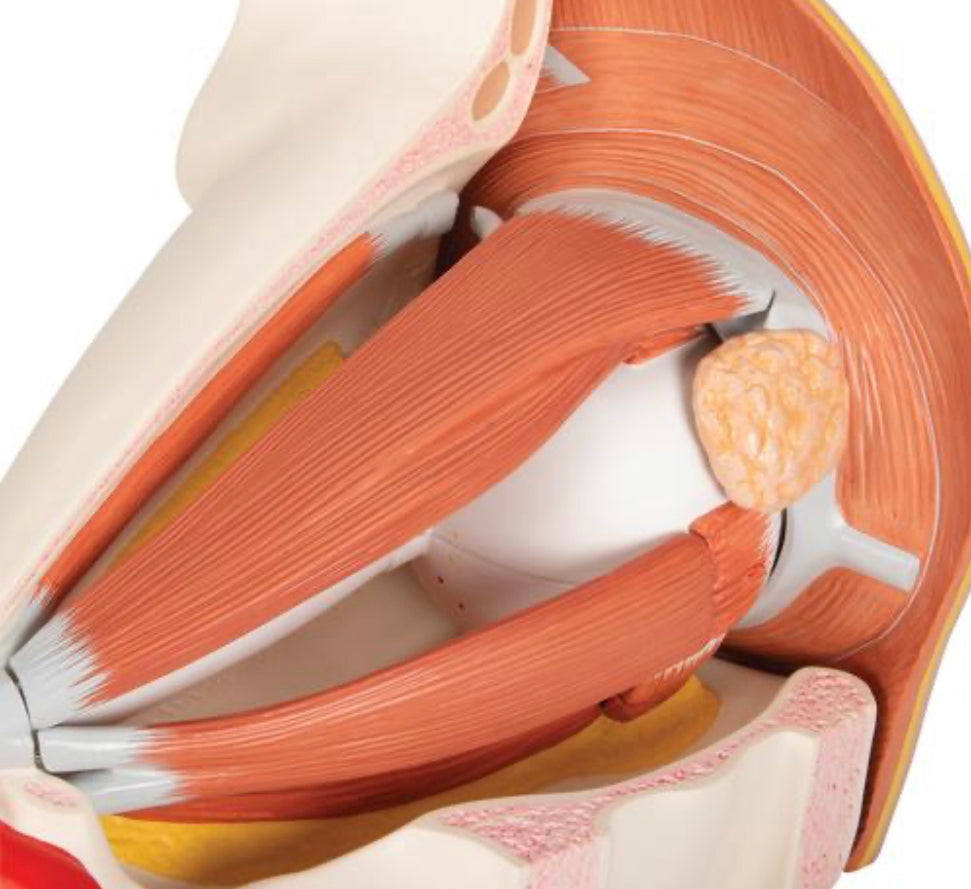SKU:EA1-1001264
Eye model 5 x normal size in 11 parts
Eye model 5 x normal size in 11 parts
Out of stock
this product is made to order. To place an order please call or write us.Couldn't load pickup availability
Are you looking for a model that provides a complete overview of the anatomy of the eye? This model shows both the structure of the eyeball's different layers in a high degree of detail, but can also be used to understand the eyeball's relationship to the other structures in the orbit.
The model is produced in 5 times natural size, weighs 4.382 kg and has the dimensions 33 x 30 x 38 cm (width x height x length). The model can be separated into 11 separate parts and is delivered on a white stand.
Anatomical features
Anatomical features
Anatomically speaking, the model gives an insight into the many structures found in the orbit. First of all, the model can be used to understand the individual layers of the eyeball:
The outermost layer is made up of the transparent cornea, which at the limbus is connected to the sclera (the white tendon that makes up the back 5/6).
The middle layer (called the uvea) which consists of the iris (rainbow) incl. the pupil, the corpus ciliare (the ray body) of which the ciliary muscle is primarily seen and the choroid (the choroid).
The innermost layer is called the retina.
The outermost layer of the eyeball can be halved and removed, so that the vitreous body (corpus vitreum) and the lens become visible. These can also be taken out and studied.
Furthermore, it can be seen how the optic nerve (N. opticus) leaves the eyeball at the back, accompanied by the vessels that supply the nerve. The optic nerve can be removed on this model.
In addition, the model shows the 3 muscles of the eyeball, which respectively control the diameter of the pupil and the deflection of the lens:
M. dilator pupillae
M. constrictor pupillae
M. ciliaris
On the outside of the white tendon membrane (sclera) you can see the 6 striated muscles that control eyeball movements. These are divided into the 4 straight muscles (musculi recti) and the 2 oblique muscles (musculi obliqui). 2 of the rectus muscles are removable.
In addition, the model shows the lacrimal apparatus, which consists of the lacrimal gland (glandula lacrimalis) and the tear ducts (consisting of the lacrimal ducts, the lacrimal sac and the lacrimal duct). Only the tear duct is not visible on the model.
As something special on this model, the surface anatomy of the eye is also shown, just as the model shows the structure of the eyelids. For example, the free bone skeleton of the eyelids (tarsus superior and inferior) and the muscles found in the eyelids (M. orbicularis oculi and M. levator palpebralis superior) can be seen.
Product flexibility
Product flexibility
Clinical features
Clinical features
Clinically, the model can be used to understand diseases of the eye. It can be, for example, "red eye", retinal detachment, vitreous collapse, diabetic eye disease, uveitis, scleritis as well as metastases and primary tumors such as malignant melanomas (birthmark cancer) in the uvea.
Furthermore, the model can be used to understand diseases of the lacrimal gland and tear ducts, such as lacrimal duct stenosis.
Share a link to this product








A safe deal
For 19 years I have been at the head of eAnatomi and sold anatomical models and posters to 'almost' everyone who has anything to do with anatomy in Denmark and abroad. When you shop at eAnatomi, you shop with me and I personally guarantee a safe deal.
Christian Birksø
Owner and founder of eAnatomi ApS







